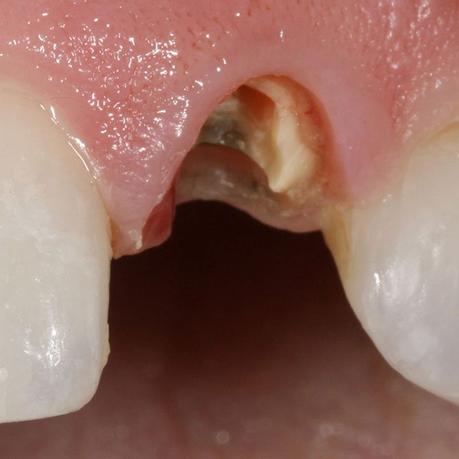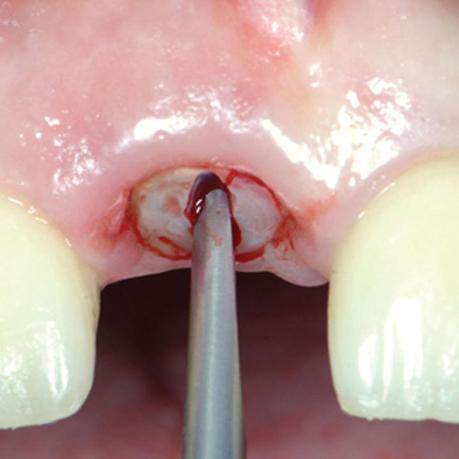
Remaining Root in The Gum
Tooth extraction, which is tooth extraction, may occur for reasons such as tooth trauma, periodontal disease, and tooth crowding. Most of the time the process is very simple and extraction is done quickly. But in some cases, the extraction becomes more complicated and requires surgery. In most cases, local anesthesia is required.
Usually, in cases where the tooth is not completely removed and some of it is still in the gum, the surgical method is used. But is it important to keep the root in the gum? If some of the teeth remain in the gum and do not come out, what are the consequences? To answer these questions, read the rest of this article.
Retention of the tooth root after extraction
When a dentist pulls a tooth, they usually also remove the roots, unless they plan to use those roots to support a denture. This way, there is no tissue left to use as food for invading bacteria. However, when a tooth is severely damaged by trauma or decay, sometimes the roots are the only part of the tooth that remains. When this happens, the gum tissue over the roots heals partially or completely.
Although not all retained roots are problematic, many will be. You may not experience any complications for several years or more, however, if an infection occurs, it may be time for a root canal.
What should be done if the root of the tooth remains in the gum?
If a residual root has been left in place for several years, at least some gum tissue has likely grown over it. Sometimes the entire root may be covered. Unfortunately, this may require the removal of gum or bone tissue. When the dentist has to remove bone during a residual root extraction, he may replace the bone with a bone graft.
In simple cases, where the roots are visible and exposed, the dentist will need little more than dental forceps to remove the remaining roots. If the root of the extracted tooth remains in your mouth and you are concerned, it is better to visit your dentist as soon as possible. The sooner you get dental help, the sooner you can prevent infection and future problems.
QUALITY AFFORDABLE DENTAL IMPLANTS
Copperhills Family Dentistry specialists provide specialized dental services that help our patients cultivate healthy and happy smiles. We’re happy to provide compassionate care coupled with cutting-edge technology.
Dental implantsWhat method is used when the root remains in the gum?
Surgical tooth extraction is a complicated procedure. This method is used if the tooth is broken in the gum or has not yet grown or the tooth does not grow directly. A surgical extraction is usually performed by oral surgeons. However, it is also performed by general dentists in some situations. In a surgical procedure, the dentist makes a small incision in your gum and in some cases, it is necessary to remove some of the bone around the tooth and stimulate the tooth to extract it.
In a simple extraction, a simple extraction is performed on a tooth that is visible in the mouth and has roots that are shaped for easy removal. Also, simple extraction does not require an oral surgeon and is generally a common procedure. Whether your tooth extraction is simple or requires surgery, the dentist will diagnose it with an evaluation
In a simple tooth extraction, the dentist makes a hole in the tooth with his special tool. Then, he uses a tool called forceps to remove the tooth. Typically, when teeth are removed with forceps, slow, steady pressure is applied with controlled force. But this amount may be uncomfortable for some people.

Whitening cosmetic
dentistry dental cleaning
and checkups
Remaining tooth root in the gum
Have you ever felt a piece of bone in your gum after a tooth extraction? This condition occurs in some cases and especially after the extraction of a decayed tooth. The gum bone heals on its own after tooth extraction. So, if a certain part is unnecessary, the gum pushes it out. This pulling out of the piece may cause the tongue to feel a sharp spot on the gum, causing tongue discomfort. Because it continuously moves toward the area where the tooth has been removed.
In such cases, a person may feel that a small bone has come out of the gum. This piece is a separated part of the bone that corrects itself after extraction. During extraction, a small part of the tooth may break and remain in the gum. This piece of bone or tooth in the gum may irritate the tongue and cause an infection in the gum. Therefore, removing it will be beneficial for the patient. The method of removing a piece of bone from the gum prevents the formation and spread of infection in the gum.
The dentist may also smooth the area where the bone protrudes. Therefore, the possibility of other parts coming out of the gum is less. In any case, if you feel bone chipping in your gums after a tooth extraction, call your dentist and discuss options that are right for your gums.
How Long Does it Take for a Tooth to Grow Back after a Tooth Extraction?
How long will your recovery take? Will you have to give up your daily routine for a while? A broken tooth inside the gum does not fall naturally. Especially in adult teeth where the entrance is blocked. But how long does recovery take after extraction? The answer to this question can be different in each patient depending on several important factors.
Factors such as the size and location of the tooth, the health of the patient’s teeth, and the patient’s compliance with the follow-up care instructions, etc. In a simple extraction that involves removing a tooth that is easily removed, the healing process is usually very short. Typically, the oral surgeon will ask you to allow at least 48 to 72 hours to rest and allow the treated area to heal. After that, the patient can easily return to his normal daily activities. The soft tissue usually heals in about 3 to 4 weeks.
When the patient has undergone surgery where the tooth is still inside the gum and jawbone, the healing process takes a little longer. In this situation, the doctor will probably recommend that the patient wait for the first 48 to 72 hours to recover, and then limit physical activity for about a week before resuming normal activities.
How much time you need to recover after tooth extraction depends a lot on the amount of physical activity required and the person’s job. This issue should be discussed beforehand by the patient and his oral surgeon so that the patient can make the necessary arrangements if necessary.
Post-operative care of residual (residual) root in the gum
After the extraction, it is important to be aware of the dos and don’ts you are doing to heal the tooth. The dentist will give you detailed instructions on how to take care of your oral health after surgery. You need to give your body time to fully recover. Do not do any heavy movements or movements that cause your head to shake or move forcibly. Stick to cold and soft foods for a few days.
With the healing of the teeth, you can eat warm and solid foods. Do not irritate the tooth extraction site and let the healing process take place over time. Do not smoke for at least 48 hours after the extraction. The chemicals in cigarettes prevent clotting and proper repair. 24 hours after the procedure, you can rinse your mouth with warm salt water. Use half a teaspoon of salt in a cup of water. Usually, most of the swelling and bleeding ends within a day or two after surgery, and the initial recovery takes at least two weeks.
As we said, your doctor will give you detailed instructions about what to do and what to expect after surgery. If you have any questions, be sure to ask the doctor before you leave the dental office. Do not forget that you have had dental surgery.
The patient should expect some discomfort even after a simple extraction. Discomforts that are usually mild and resolve quickly. Research has shown that the use of non-steroidal anti-inflammatory drugs can greatly reduce pain after tooth extraction. These drugs include ibuprofen and other pain relievers. Take the dosage prescribed by the doctor 3 to 4 times a day. Take the first pills before the local anesthesia wears off. Continue taking them for three days and ask your doctor for complete instructions.

